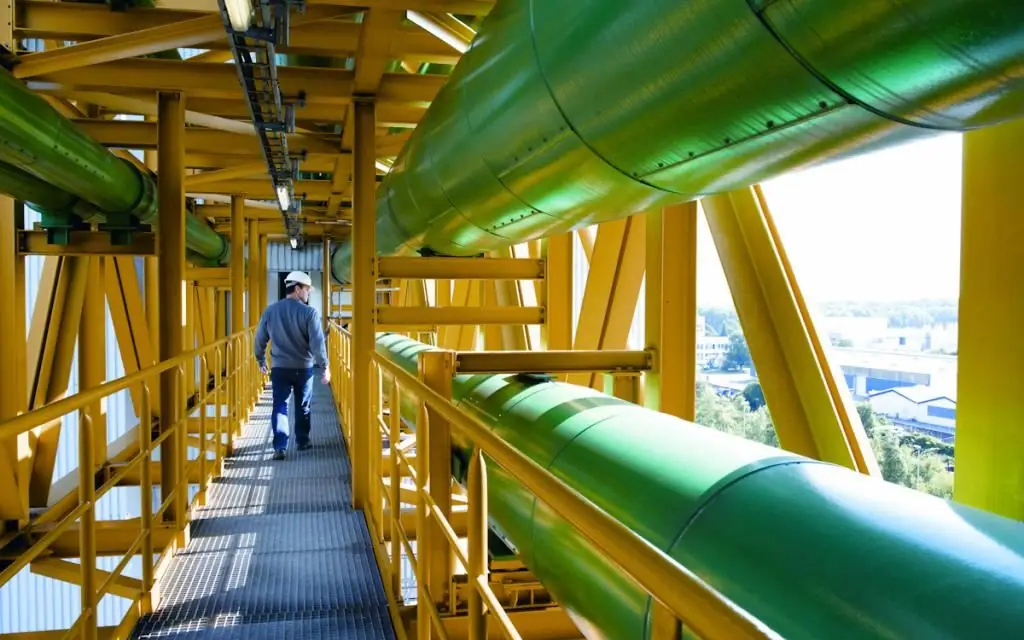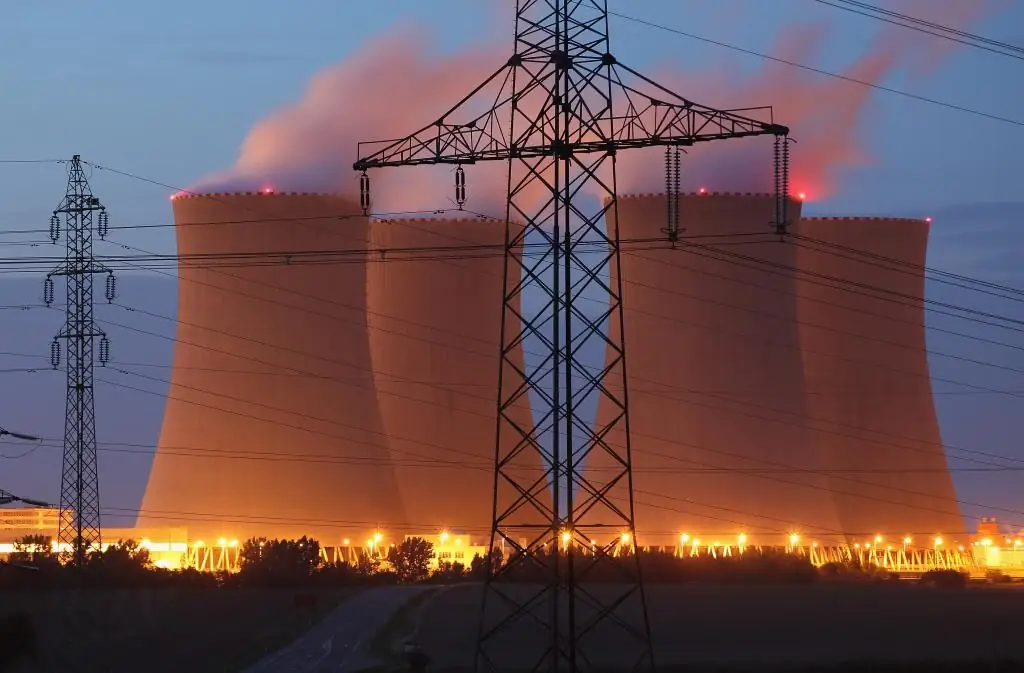2025 Author: Howard Calhoun | [email protected]. Last modified: 2025-01-24 13:10:39
Tsimlyanskaya HPP, being the only hydroelectric power plant on the Don River, is at the same time a key section of the Volga-Don waterway. It is located in the Rostov region, not far from the cities of Volgodonsk and Tsimlyansk, which were formed only due to the appearance of a power plant. Photos of the Tsimlyansk hydroelectric power station are not able to convey the grandiose scale of the station's structures, it belongs to those man-made objects that you must see in person.

Stages of the great construction
The first ideas about a waterway along the Volga and Don with a hydroelectric power station and a navigable reservoir were worked out as early as 1927, 1933 and 1938, but for a variety of reasons, the development of the project began only in 1944.
The decision to build the Volga-Don waterway and the Tsimlyansk hydroelectric power station, which is part of it, was approved by a decree of the Soviet government on February 27, 1948. The construction was immediately declared "the great construction site of communism." The station was scheduled to enter service in 1953.
However, not all builders participated in this "feast of creation" of their own free will. The Ministry of Internal Affairs was appointed responsible for the project, and on January 14, 1949, the Tsimlyansk branch of the Gulag was established. Although the construction of the Tsimlyanskaya hydroelectric power station was quite well mechanized, the number of prisoners involved mainly in earthworks reached 47 thousand. In total, more than 103,000 people passed through the camp. Until the end of 1949, the labor of captured Germans was widely used at the construction site.
In 1948, preparatory work began. This included the construction of storage and residential buildings, roads, quarries and a temporary diesel power plant. At the same time, the final stage of the preparation of the Tsimlyansk hydroelectric project was underway, which ended at the beginning of next year.
On February 10, 1949, the construction of the spillway dam and the power plant building began. The Tsimlyanskaya HPP grew at an impressive pace. The bed of the Don was blocked on September 23, 1951, and already in January 1952, the filling of the reservoir bowl began.
In the same 1952, the station began to generate electricity. On June 6, the launch of the 1st hydroelectric unit took place, on July 19, the 2nd hydroelectric unit was put into operation. In the spring of 1953, the 3rd and 4th hydraulic units were launched, on July 22 the State Commission recognized the Tsimlyansk HPP as ready for commercial operation. The station was finally brought to its design capacity on July 22, 1954, when the last, 5th unit produced energy.

Quick Specs
The building of the Tsimlyanskaya HPP,where the machine room with four aggregate blocks is located, is combined with a fish elevator and is a channel-type structure. Today, 4 vertical hydraulic units equipped with rotary-blade turbines are installed in the machine room of the station. They drive generators, 3 of which have a capacity of 52.5 MW and 1 with a capacity of 50 MW. A fifth generator of 4 MW is included in the design of the fish elevator.
Initially, the station had a capacity of 164 MW, generated by 4 hydroelectric units of 40 MW each and 1 fish elevator unit. At the end of the modernization, which ended in 1981, the power of the main generators rose to 50 MW, and the total energy production increased to 204 MW.
From 1997 to 2012, during the next stage of reconstruction, obsolete hydroelectric units of the station were completely replaced with new ones. As a result, the station's capacity increased again, and now the Tsimlyanskaya HPP supplies 211.5 MW of electricity to the contacts of the open switchgear. Also during these years, the gates of the spillway dam were replaced.

Hydroelectric station
Being a low-pressure run-of-river hydroelectric power plant, Tsimlyanskaya HPP has the 1st class of capital. The building of the power plant is included in the pressure front of the HPP hydroelectric complex. The station's dams are crossed by a road and railway tracks.
In addition to the station building itself with a fish elevator, the Tsimlyansky hydroelectric complex includes:
- two left-bank earthfill dams, 12 and 25 meters high;
- right-bank alluvialearthen dam, 35 meters high;
- concrete spillway dam, 43.6 meters high;
- two shipping locks with an outport, a connecting channel between them and a downstream approach channel;
- Headworks of the Don Main Canal;
- Tsimlyansk reservoir, 360 kilometers long and 40 kilometers wide, with a maximum depth of 31 meters.
During the work at the Tsimlyansk hydroelectric complex, 29.5 million cubic meters of soft soil and 869 thousand cubic meters of rocky soil were excavated, 46.6 million cubic meters of soft soil and 910 thousand cubic meters of stone were poured. 1,908,000 cubic meters of concrete were laid into the facilities of the Tsimlyanskaya HPP, and 21,000 tons of mechanisms and metal structures were installed.
Economic importance
In addition to generating low-cost renewable electricity, the Tsimlyansk hydropower plant provides regular navigation and navigable depth in the lower reaches of the Don. The reservoir, formed on a problematic section of the river with rifts and shallow water, made it possible for large-capacity vessels to pass.
The Tsimlyansk reservoir feeds a lot of fisheries facilities, irrigation canals and systems, providing water for irrigation of more than 750 thousand hectares of agricultural land, supplies drinking water to about 200 thousand residents of surrounding cities, and provides water supply to the Rostov NPP.
The dams of the Tsimlyanskaya HPP protect the underlying agricultural land and settlements from spring floods. The reservoir of the Tsimlyansk hydroelectric power station is of great importance for fishing; up to 6,000 tons of valuable fish are caught here annually.

Environmental impacts
When filling the Tsimlyansk reservoir, 263.5 thousand hectares of land, 164 small settlements and part of the city of Kalach-on-Don went under water. It required the transfer of a number of sections of railway tracks, roadbeds and communication lines, as well as the need to build the Chirsky bridge across the Don River. As a result of the flooding, the archaeological site of the Sarkel fortress, barely explored by scientists, also perished.
The construction of the Tsimlyanskaya HPP made it difficult for fish to reach the spawning grounds, which negatively affected the natural reproduction of the fish resources of the Don and the Sea of Azov.
The appearance of the Tsimlyansk reservoir caused an increase in evaporation losses, which significantly reduced river flow into the Sea of Azov and led to an increase in its salinity.
Recommended:
Fuel-free energy. Prospects for alternative energy in Russia

Modern energy is based mainly on hydrocarbon fuel, which is used in various forms and types in almost all sectors of the national economy around the world. In Russia, fuel materials are not just a source of energy, but also an export commodity on which the economic model of development depends. In many ways, this explains the tasks of the country's leadership, focusing on the development of alternative energy sources in order to reduce dependence on the traditional resource
Reviews about TC "Energy". Transport company "Energy": addresses, cargo delivery

If you are faced with the need to transport some things or goods, then there is always a problem with finding a car and a driver. Entrust it to professionals, contact TC "Energy"
Heat energy tariff: calculation and regulation. Heat energy meter

Who approves and regulates heat tariffs? The main factors affecting the cost of the service, specific figures, the trend of increasing cost. Thermal energy meters and self-calculation of the cost of the service. Prospects for billing. Varieties of tariffs for organizations and citizens. Calculation of REC tariffs, documentation required for this
Conversion of thermal energy into electrical energy with high efficiency: methods and equipment

There is growing concern around the world about the catastrophic decline in the levels of natural energy resources needed for modern life, such as oil, natural gas and coal. Nevertheless, this fact contributes to the development of new technologies based on the use of alternative natural resources: solar energy, hydropower, wind energy, bioenergy, geothermal energy. This is popular in the article
Types of energy: traditional and alternative. Energy of the future

All existing areas of energy can be conditionally divided into mature, developing and being in the stage of theoretical study. Some technologies are available for implementation even in a private economy, while others can only be used as part of industrial support

